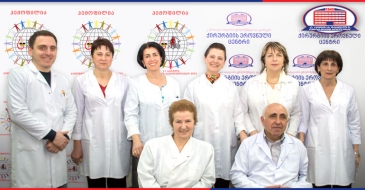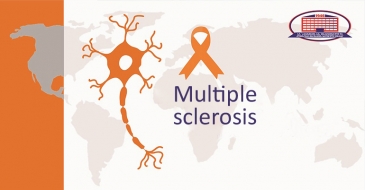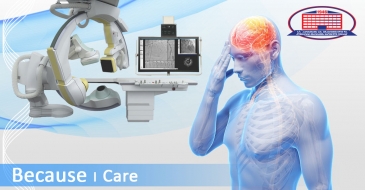What is endosonography (EUS)?
Ultrasound and endoscopic diagnostics are combined in endosonography (EUS), a high-tech diagnostic study.
- The tool used for an examination is an echoendoscope, a side-view gastroscope (also known as a "swallowing probe") to which a small ultrasound (ultrasound) scanner is affixed. The ultrasonography scanner uses a "probe" to get us as close as possible to the organ that has to be examined.
- With a resolution of less than 1 mm and 6 cm, an ultrasound frequency of 5 to 12 MHz, which the echoendoscope utilizes, produces images with excellent quality. A distinct representation of the radius. Additionally, it features a unique instrumental channel that enables biopsies and medical manipulations.
- The only way to gain insight into the layers of the stomach-intestinal wall and esophagus is through endosonography.
Following other available examinations, endosonography is utilized for diagnosis and accomplishes the following functions.
- Following other available examinations, endosonography is utilized for diagnosis and accomplishes the following functions
- Identification of the type of tumor development (biopsy and fine-needle aspiration of the tumor and suspicious lymph nodes, with the material recovered being used for further morphological and cytological analysis)
- Selecting appropriate treatment strategies.
Indication:
I. პანკრეასის (კუჭუკანაჯირკვალი) დაავადებები - „ოქროსსტანდარტი“. Pancreatic (stomach gland) diseases: the ,,gold standard".
- Diagnosis and treatment of chronic pancreatitis and its consequences;
- Identification of the etiological cause of acute pancreatitis;
- Detailed diagnosis (TNM-staging) and biopsy of different tumor forms of the pancreas, papilla of Vater, and Wirsung's duct.
II. Cancer of the stomach and esophagus.
- Preoperative T- and N-staging of stomach and esophageal cancer, evaluation of resectability (possibility of excision) in patients who are able to undergo surgery;
- diagnosis and biopsy of the etiology of thickened stomach folds.
III. Submucosal neoplastic formations.
- Submucosal formations larger than 1 cm should be evaluated by endosonography;
- Endosonography allows us to determine the layer of the wall from which the formation grows and to determine its true size and direction of growth;
- According to the ultrasound characteristics, we can assume the histological structure of the growth - we can determine the malignant nature of the growth with an accuracy of 87.5%;
- Biopsy of submucosal formation;
- We can rule out 100% of external pressure.
IV. Lung Cancer.
- Evaluation of a lung formation near the esophagus and taking a biopsy from it (sensitivity - 92%).
- Mediastinal lymph node biopsy (specificity: 97%, sensitivity: 90%);
- The evaluation of mediastinal invasion (T4 stage) (the growth of large blood arteries, vertebral bodies, and the mediastinum itself).
V. Liver and biliary tract.
- Puncture of liver metastases, if the metastasis is not accessible for skin puncture and if we have repeatedly received inconsistent outcomes following skin puncture;
- Identification of biliary tract tumors and their T- and N-staging (76–92%) (distinguishing benign from malignant tumors);
- The technique holds particular significance in the diagnosis of conditions affecting the liver ducts, Wirsung ducts, and terminal segments of the biliary and Wirsung ducts. Other diagnostic techniques have limited access to these areas:
- Primary sclerosing cholangitis (PSC) diagnosis (accuracy 93–100%);
- cholelithiasis diagnosis (accuracy 93–100%).
VI. Curative manipulations under endosonography.
- Drainage of pancreatic pseudocysts, bile and pancreatic ducts.
- The development of different anastomoses, such as pancreaticogastrostomy, gastroenterostomy, and cholangioduodenostomy.
- Coeliac trunk neurolysis - this treatment effectively addresses persistent pain in individuals with pancreatic and liver cancers who are inoperable (palliative).
- Radiofrequency ablation (EUS RFA) - thermal damage to the target tissue (cancer cells) using an electromagnetic field. Damaged cells undergo coagulation necrosis for several days.
- Brachytherapy - the radiation source (iodine-125) is applied directly to the tumor's afflicted organs (liver and pancreas), either inside the tumor or on its surface, covering the entire formation. This maximizes the protection of other healthy organs or tissues while precisely irradiating the target organ. It is effective in combination with chemotherapy.
- Applying radiation treatment by placing X-ray contrast markers in the region of the malignant tumor (pancreas). It enables us to avoid under-irradiating the surrounding tissues and accurately focus the rays to the target spot (independent of respiratory movements).
- Ablation of a malignant pancreatic cyst: the cyst wall decreases (tissue necrosis) by injecting a cytotoxic substance (ethanol, paclitaxel) into the cyst.
EU-ME3:
- Compared to EU-ME2, the image in B-mode has improved significantly;
- The THE (Tissue Harmonic Echo) mode lowers artifacts and increases tissue resolution by providing a more detailed granular picture;
- A new Doppler mode called H-Flow has been added. This makes the biopsy even safer because it allows us to see smaller-caliber blood vessels and prevents damage from occurring during the use of a thin needle during puncture. The other Doppler modes that assist in identifying medium- and large-caliber blood vessels are Color Flow, Power Flow, and Pulse Wave.
- The SWQ (Shear Wave Quantification) mode automatically determines the tissue's absolute stiffness, aiding in diagnosis and puncture needle selection;
- The S-Focus feature automatically establishes the focus, which does not change when the echoendoscope is removed by a short distance. (This ensures that the concentration is maintained throughout breathing movements).










